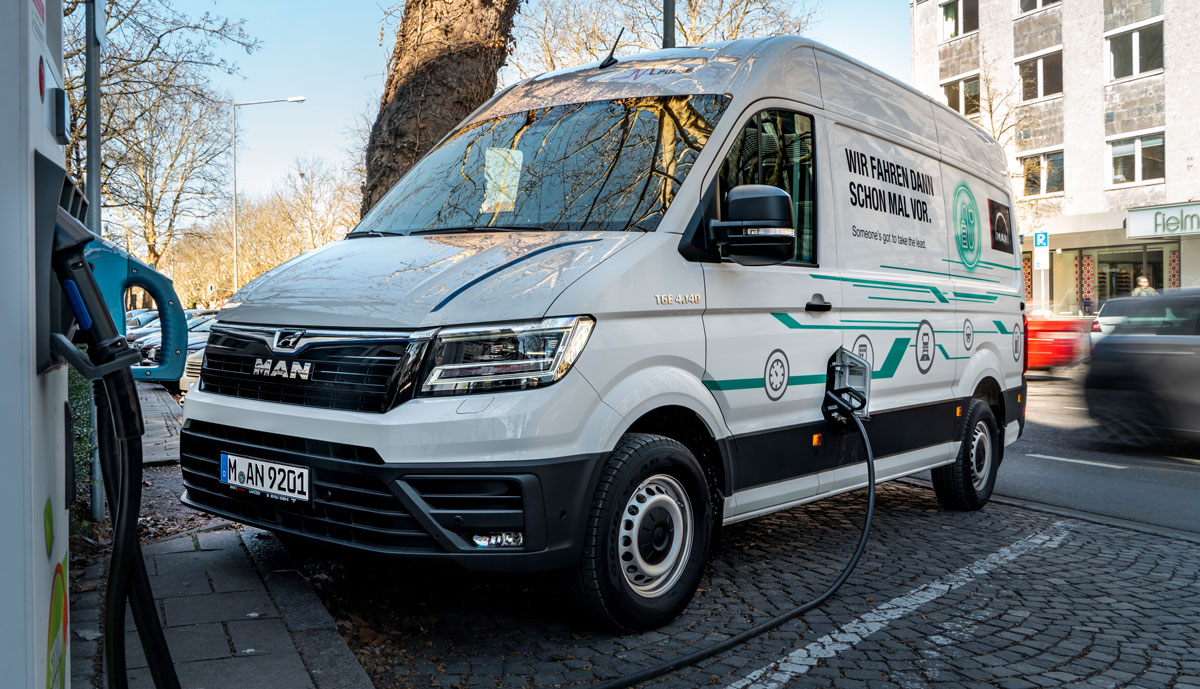Fleet management telecommunications solutions provider Geotab presented the results of a recent study. According to this, 60 percent of European passenger cars and light commercial vehicles in fleets can already be replaced with all-electric alternatives. With an assumed useful life of seven years, this corresponds to the analysis of potential savings totaling 261 million euros.
The results came from the Electric Vehicle Suitability Assessment by Geotab, which analyzed the unknown driving patterns of 46,000 vehicles connected to an ICE engine from 17 countries, including Germany, France, Spain, Italy and the United Kingdom. Profitable Sustainability: The potential for European fleet electrification examines the operating costs and environmental impact of conventional light commercial internal combustion engine vehicles (including passenger cars, SUVs, vans and light commercial vehicles) and compares them with their battery-electric counterparts.
According to the data, fleet managers can expect to save an average of €9,508.47 per vehicle over seven years, even excluding savings from government incentives such as first-time purchase grants. Given the environmental impact of switching to electric vehicles, the savings correspond to an average reduction of more than five tons of CO2 emissions per vehicle. In all compounds, this is equivalent to the carbon sequestration of 2.6 million tree seedlings over a 10-year period.
“Companies are realizing that electric vehicles will be the future of their fleets, and they are now able to measure some of the benefits of moving to battery power,” Geotab’s Klaus Bokers said. “Our study represents a significant advance that demonstrates the feasibility of switching to electric vehicles, which will help fleet operators achieve their sustainability goals. It also shows that government incentives can have a significant positive impact on fleet electrification.”
Other results of the study
According to the study, 86 percent of fleet range requirements in Europe can be met 98 percent of the time by an electric vehicle. Great Britain has the highest proportion of long-range electric vehicles at 89%, followed by Spain (86%), the Netherlands (85%), Italy (77%), Germany (76%), and France (63%).
When looking at cost-efficiency, continental Europe outperforms the UK. According to the study authors, about 71 percent of e-vehicles in Italy have a long and economical range, while Spain (70%) and Germany (69%) have similar values. In the UK, on the other hand, it is only 55 per cent. With a €6,500 incentive sample, the cost efficiency increases by nine percentage points.
“The ability of electric vehicles today to meet the needs of European fleets is encouraging. The electrification of vehicle fleets is a gradual process and this study shows that companies that do not deal with e-cars can lose money,” says Bookers. Sustainability has become an integral part of any company’s goals, and transportation is a key component in the mix. Now is the perfect time to start using e-vehicles on a smaller scale for later expansion.”
The study used a solution provided by Geotab to anonymously analyze the driving behavior of passenger cars and light commercial vehicles with internal combustion engines from December 30, 2020 to December 30, 2021 in 17 European countries. For the analysis, it is assumed that the vehicles were purchased, not leased, and operated for seven years. Using real-world electric vehicle performance data, Geotab technology identifies those fleet vehicles where an available EV can meet daily range needs and result in a total cost of ownership equal to or less than a comparable new ICE vehicle. Infrastructure costs are not taken into account.

“Award-winning music trailblazer. Gamer. Lifelong alcohol enthusiast. Thinker. Passionate analyst.”






More Stories
Moderators don't recognize Liz Truss
Wimbledon 2025 goal – Boris Becker is no longer insolvent – Culture and Entertainment
Former tennis star: Wimbledon 2025 goal – Boris Becker is no longer insolvent – Entertainment